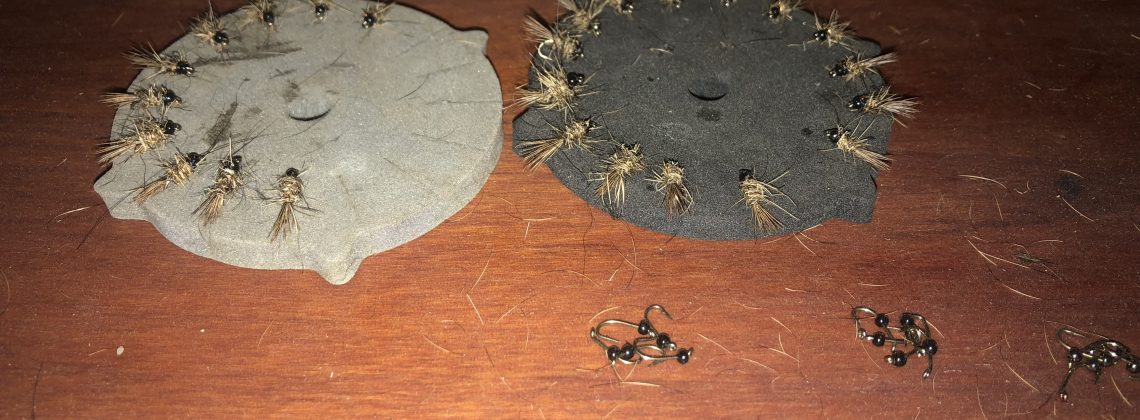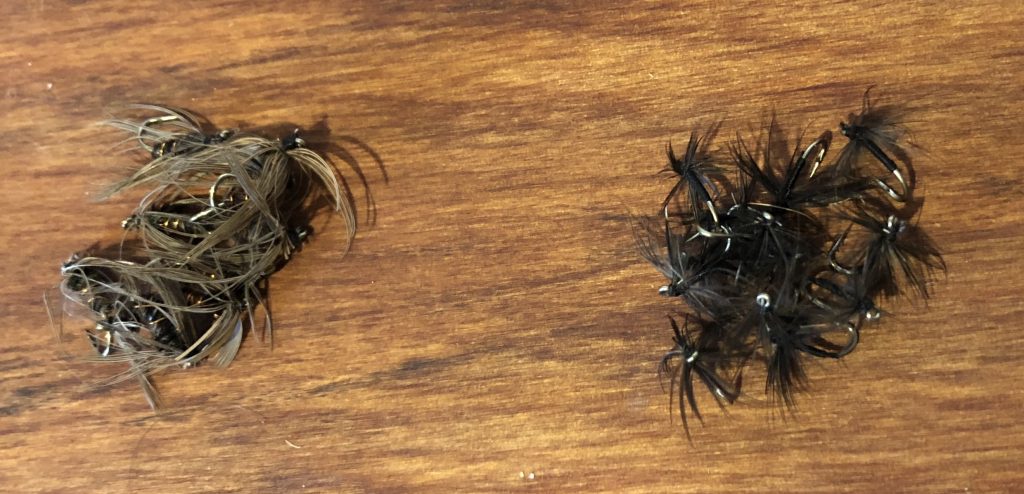Wonderful Soft Hackle Article

The Fly Tyer Magazine has a wonderful article on soft hackles including how and why they work. The article includes a fantastic passage that makes a very telling point about why fish take flies.
Most of today’s patterns strive to be facsimiles of insects suspended in time, such as mayflies with perfectly erect wings floating placidly on the current. Ironically, this isn’t representative of what a large percentage of insects resemble, particularly those that the trout eat.
This paragraph is one of the best I have read on fly fishing. It gets to the point, that fish take something that looks like food and most of the time that is subsurface rather than on the top. Also, exact replicas of insects rather than generic patterns mean the presentation has to be perfect. A rough generic pattern can drift correctly because it does not have features that need to be upright.
Last season I tied up some soft hackles with the intention of using them on the swing with my Winston Microspey when the fish were not rising readily. I did not really give them a fair go, mainly because I could always find rising fish somewhere so did not need to use the soft hackles.

#14 Partridge & Pheasant and #16 Black Spider.
This season I am intending to use the Microspey more and swing soft hackles when the conditions are right. In the past I have used two weighted #16 Hare & Coppers on the swing when the fish have not been rising readily enough to cast to. This can be effective, and as the Hare & Copper is my emerger when I am fishing the rise I do not need to carry more patterns. This season I will be using a couple of simple soft hackle flies, a Black Spider tied out of tying thread and starling feathers, and a pheasant and partridge, tied from the materials that give the fly its name.
